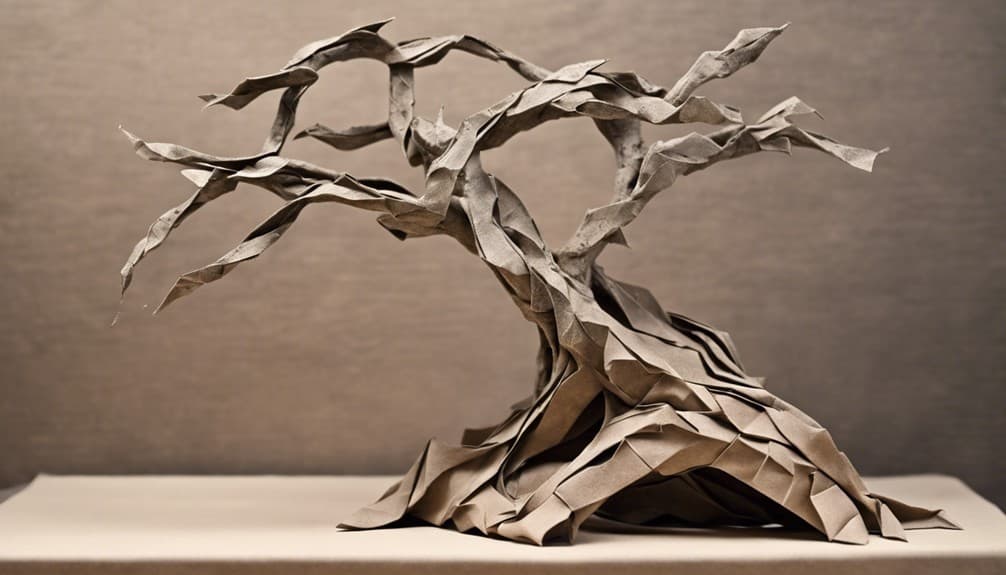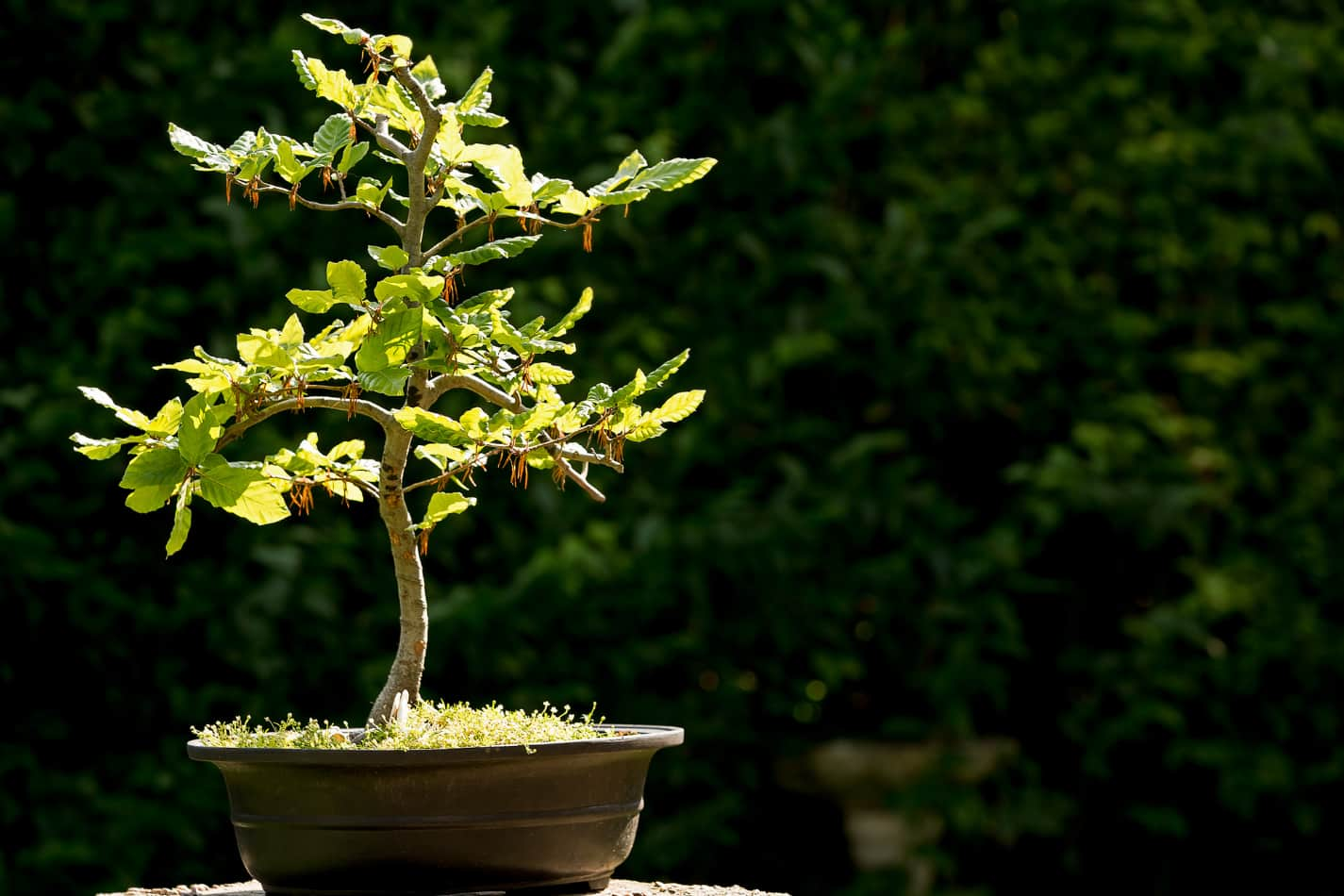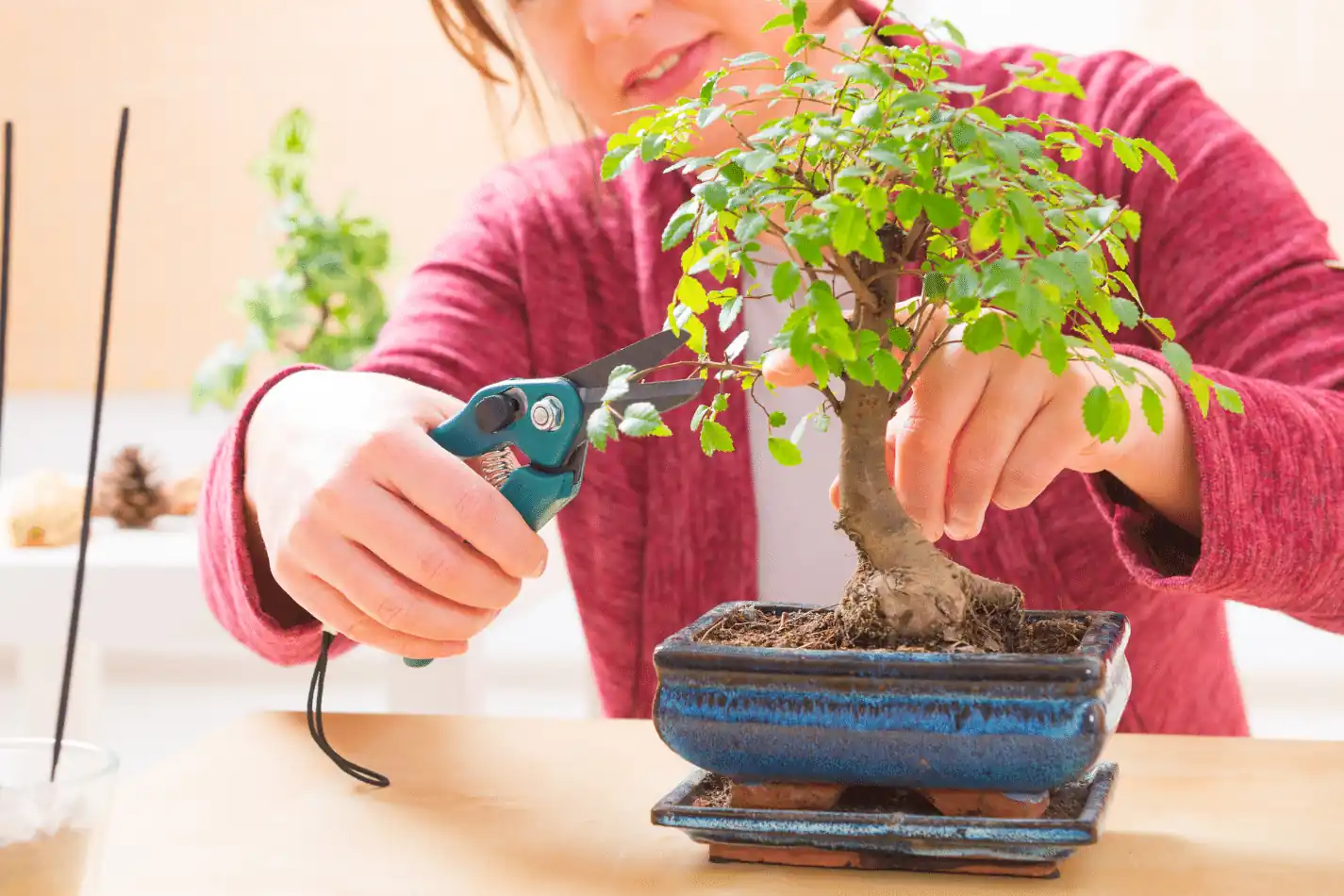The purpose of creating a bonsai tree is to replicate nature in a small format. If you are planning to make bonsai and have done even the most basic research then I’m sure you know the importance of choosing the right bonsai pot by now. But, how do you do that?
Choosing the right bonsai pot involves determining the appearance, color, shape, and requirement of the tree of your choice. Choosing the pot is about complimenting the inherent beauty of the bonsai. The pot should add to the overall appearance of the bonsai instead of drawing attention from it.Â
In this article, I will talk about everything you need to know on how to choose the perfect pot for bonsai.
To understand things better, I will discuss the style, size, shape, color, and materials of different pots so that you can find the right one for your tree.
After that, I will suggest ten bonsai pots that are great choices for beginners.Â

Choosing the Right Bonsai Pot
Creating a bonsai tree is not an easy task. It is about creating visual art. The pot of the tree also becomes a part of the art. So, it is important to choose the right container for a bonsai tree.
You can choose pots made in China, Korea, and Japan since they specialize in making bonsai. Besides, you can buy pots from the local potteries if they fit your taste.
When you want to get a pot for your bonsai tree, you may find pots of various shapes and sizes.
For a beginner, it can be confusing to select the perfect pot from all the options. Therefore, it is necessary to understand what type of tree you are replicating as a bonsai tree, and learning about the different aspects of pots to match with the trees.
Here is what you need to know about bonsai trees and pots so that you can choose the right container:
Identifying Masculine and Feminine Tree
Finding the right pot for a bonsai begins with identifying the gender of your tree. So, it is better to buy a pot for the tree when it shows some distinct physical characteristics.
You can understand whether a tree is masculine or feminine based on its shape, color, and texture.
The gender of the tree often depends on your perspectives, but there are certain characteristics that help to recognize masculine and feminine trees.
Characteristics of Masculine Trees
- Pollen producing trees
- Have a feeling of strength and roughness
- Thick and angular shape trunks
- Angular shaped and dense branches
- Having old barks or deadwood and visible wounds
- Overall, it gives a masculine feeling.
A prominent example of a masculine tree is Pine or Hawthorn trees are masculine trees because of their rough touch and structure.
Characteristics of Feminine Trees
- Fruit producing
- Appear to be delicate
- Graceful movement in trunk and branches
- Trunks and branches are less thick than masculine trees
- Smooth bark and graceful curves
- Colorful leaves
An example of a feminine bonsai tree is a Maple tree. The colorful foliage and delicate structure of the tree gives a feminine feeling. Beginners can start with creating Maple bonsai, as it does not require high skills or care.
Apart from being masculine or feminine, bonsai trees can also be androgynous. It means a tree can have features of both feminine and masculine trees. For example, a Hawthorn tree can have rough barks but grow with graceful curves.
Or, Pine trees can grow up straight and have a gradual taper. Thus, many people will see the trees as masculine with feminine features.
On the other hand, a maple tree can have a thick trunk and heavy but colorful taper. So, it has both feminine and masculine characteristics.
Now, identifying the gender of the tree is important because you have to choose the pot according to your tree gender. You need to buy masculine pots for masculine trees and a more delicate one for feminine trees.
Fortunately, some pots are right even for androgynous trees or trees having a combination of masculine and feminine attributes. Many trees have mixed features. So choose a pot based on which features of the tree you want to emphasize.
Like trees, pots also have masculine and feminine features. Here are their specific features that differentiate them –
Features of Masculine Pots
- Rectangular or square in shape
- Hard and rough edges
- Heavy and angular
- Taller and deep
- Often decorated with rough objects or stones
- Intricately carved
- Having noticeable and decorated feet
- Has visible inward lips on the rim
Features of Feminine Pots
- Oval or circular
- Round and smooth edges
- Smooth and plain
- Simple decoration
- Images or figures showing human and animals surrounded by trees
- Thin lip on the edge of lips curved outward from the edges
- Unsociable feet
- Flat body and close to the ground
There are many pots in the market that has combined features of masculine and feminine features.
For example, a pot can be rectangular and rough but the feet may not be so visible. On the other hand, a feminine pot can have noticeable feet and rims.
Selecting the Right Pot Material
Not just the outer beauty but also the health of your tree depends on the container. Choosing the material for the bonsai pot depends on the tree, the environment, and your choice.
Classic or traditional pots for bonsai trees are often made of ceramic or porcelain. Other materials for bonsai pots are:
- Concrete
- Clay
- Stoneware
- Metals
- Mica
- Wood
- Plastic
Having pots made of the right material is crucial. Metal pots may become toxic for your plant at high temperatures, so as a beginner, avoid pots made of materials that can harm the bonsai trees.
However, the metal pots can have plastic or ceramic inner lining to stop toxins from getting absorbed by the plants. Then you can buy them.
That is why, it is safe to choose ceramic, porcelain, and stoneware pots if you are a beginner. These pots absorb excess water and keep your bonsai tree healthy.
It is better not to compromise with the quality of pots. It has to be durable for your bonsai tree.
You can also make your bonsai pot as you prefer, but make sure you have holes in them. Bonsai pots must have drainage holes and wiring holes to maintain the health of bonsai trees.
Choosing the Pot Size and Shape
Once you have identified the gender of your bonsai tree and the materials for the pot, you should start thinking about the size and shape of the pot.
The size determines how fast your bonsai tree is going to grow. Bonsai of different styles and genders also require different containers.
There are actually no fixed rules for buying pots for bonsai trees because they can be unpredictable. However, there are some basic rules which help beginners to buy their first pots.
Remember, bonsai pots have to be deep according to the style and species of the tree. It is important to let the roots have enough room to stretch.
Pot Length
Choosing the correct size and length of the pot depends on the height and width of the bonsai tree. If the height of the tree is larger than the width, you have to buy a pot 2/3 or ¾ the height of the bonsai.
If the width is greater than the height of the tree, the length of a pot has to be 2/3 of the width of the bonsai tree.
Pot Depth
Like the length of the pot, it is crucial to have the right depth. The containers have to be deep to hold enough soil for the healthy growth of the tree.
The roots of the bonsai need to stretch to create a system for absorbing necessary nutrients and water.
To select a pot with the right depth, measure the width of the trunk or the ground root of the tree. Trees that have heavy trunks look good in deep pots.
On the contrary, trees having narrow trunks are better in shallow pots.
Pot Shape
The beauty of the bonsai largely depends on the shape of the bonsai pots. There are different shapes of pots in the market and you can choose a shape that goes well with your bonsai’s style. Choosing the right pot can enhance the overall impression of the bonsai.
Although circular and rectangular pots are the classic and traditional style of pots, there are few other choices available such as
- Square
- Rectangular
- Oval
- Rectangular pots with round and oval corners
- Lotus shaped bonsai pots
Rectangular with angular edges are mostly used for masculine trees. These pots enhance the features of large deciduous and coniferous trees.
Both species are considered masculine when they have a wide base or trunk and prominent taper. Hence, the trees will look good on the rectangular or square pot.
On the other hand, round and oval shape pots are the best choices for feminine trees. It brings out the feminine features of clump style bonsai, deciduous trees, and forest bonsais.
Tree Styles and Pot Shapes
Besides gender differences, bonsais also have different styles. For example, they can be upright, slanting, cascading, and so on. Hence, different trees require different pots of various shapes.
Here’s how you can choose the proper pot based on the structure of your bonsai:
Upright: There are two types of upright bonsai, formal and informal. The formal upright bonsai needs shallow or medium depth rectangular or oval pots. On the other hand, informal uprights require shallow or medium depth straight side oval pots or irregular oval pots.
Slanting: Shallow round or irregular round pots are perfect for slanting bonsais. The pots are used for trees that give both feminine and masculine feeling.
Literati or Bunjin-gi: Shallow round or shallow free form pots are used for this type of bonsai.
Cascade: Cascade bonsais are planted on hexagonal, octagonal, or square and deep pots. There is also a semi-cascade bonsai, which needs round, octagonal, hexagonal square pots. They are often semi-deep.
Twin-trunk: Twin-trunk bonsais are often uncontrolled, and so it is planted on shallow free-formed pots. Round pots are also great fits.
Multi-trunk: You can plant this type of bonsai in pots of different shapes and dimensions. The pots can be square, rectangular, oval, hexagon, octagon, and petal-shaped. They can be shallow or medium depth.
Windswept: Because of its style, windswept bonsai needs a shallow free from pots having a rectangular or oval shape.

Choosing the Pot Color
After deciding on the shape and style of the pots, it is time to select the right color for the pot. You have to choose a color which complements the color of the tree.
You can choose a color matching with the trunk, leaves, fruits, flowers, or any other unique features of the tree.
People, who are new in the field of bonsai, may need guidance to choose the proper color. There are many common and traditional colors used in bonsai pots.
The color of the pot should harmonize with the color of the tree, which you want to make noticeable.
For example, green is the most prominent color of your bonsai, so you can choose a dark color pot that has earthy tones, brown, and dark green colors.
For green plants, you can also choose unglazed pots since they have hues of clay and brown.
Besides, dark pots are also great to highlight bonsai with white or light color flowers. If you have bonsai with colorful flowers, choose a color that matches the flower color or is one or two shades darker or lighter. Glazed pots are suitable for colorful fruits and flower bonsai trees.
Here is a list of prominent tree colors and the colors of pots that harmonize with them:
| Color of the trees | Color of the Pots |
| Green | Dark color, brown, red browns, clay, and earth-toned pots |
| White | Dark color, green, yellow, red, dark or light blue, white |
| Red | Dark blue, light blue, off-white, and green |
| Yellow | Dark without glaze, dark green, blue, bone color, celadon |
| Orange | Green and Dark Brown |
| Blue | Yellow, red, gray, white, off-white |
Tips on Buying a Bonsai Pot
- Classify the sex, style, and color of bonsai trees before buying a pot, and then buy the most suitable pot having the appropriate shape, size, and color.
- Bonsai is a complicated and complex process. Hence, you need to be passionate about it. So, do not compromise with the quality of the pots.
- The pot you are buying should not only increase the beauty of the art. You have to make sure that the material of the pot is not harmful to the tree.
- When you are ready to buy a bonsai pot, do comprehensive research of the market. Find out where you can buy the best pots for bonsai trees.
- After finding the right place for bonsai pots, find out about the quality of the containers. As people about their experience or visit the shops or potters to research on your own.
- If you are buying online, be more careful since you cannot personally examine the pot. Collect the best images of several pots and find out which one is best for your tree.
- People often get deceived while buying things online, so check the reviews of other customers before you order a pot from an online shop.
- One of the most important aspects of the pot is the holes for drainage and wiring. While buying a pot, check if there are holes in the bottom.
10 Bonsai Pots for Beginners
As you have learned how to choose the best pot for your bonsai tree, you can start researching the perfect pots. However, to make things easier for you, here are 10 bonsai pots that you can consider for your first bonsai tree.
Kilofly Happy Bonsai Mini Glazed Pots
These mini glazed pots come in a set of four pots with four mesh drainage systems. If you want to have multiple mini bonsais, you can consider buying these pots. They are made of traditional ceramic material.
There are four pots with unique style and shapes which can be used to plant both feminine and masculine bonsai. The size is small, but they look adorable. You can put the pots on the table, shelves, or window side.
Kilofly Happy Mini Glazed pots are a perfect choice for a beginner, as they have a universal style and are made of traditional material. Also, the metallic blue color is compatible with trees with different colors.
Baarrtt Bonsai Training Pots
These pots are best as bonsai training pots. As a beginner, you should practice growing bonsai trees before spending money on expensive decorative bonsai pots.
The Barrett Bonsai Training Pots are six pots in one set. These 9-inch large pots are made of poly-resin plastic, which makes them highly durable.
Hence, they will not get damaged at high temperatures or get cracked. The dark matte color gives the pot a nice look, and the color will not easily fade away.
The set of plots also include humidity trays for keeping the tree healthy and growing. The pots have rolled edges, which make them easy to carry or move from places.
There are four feet and a small hole on the bottom that maintains proper ventilation and drainage. All these features of Baarrtt Bonsai Training Pots make it perfect for bonsai trees in training.
Brussel’s Bonsai Tree Pot 10 Inch Glazed Oval Shape
This glazed oval shape pot is perfect for bonsai in training and also for display. There many colors available but the green glazed and the new cream pots are getting a lot of praise. Both experts and beginners of bonsai art can use this pot.
The pots are made of durable ceramic. The size is 10″ x 8″ x 2.5″ and it weighs 3.0 lbs. They are waterproof, and so the color will not be damaged even if you put it outside in rough weather.
The smooth finishing and the low feet of the pots give a feminine feel.
Ceramic Succulent Cactus Planter Pot with Brown Matte Finish
This simple yet classy pot is made of ceramic. The unglazed pot has a round shape and a matte brown or dark color. The dimension of the pot is 7.8 x 7.8 x 3.5 inches, and it weighs nearly 1.90 pounds.
There is a hole in the pot’s bottom that keeps the plants healthy by managing the drainage system. The shapes and sizes of the pots are perfect for small cacti, succulents, and bonsai trees.
The design of the pot is elegant, and it matches with contemporary culture. You can put it outdoors or in the garden. If you want to decorate your house, you can keep the bonsai pot on a table or desk.
Rectangle Mica Bonsai Training Pots
This is the ultimate bonsai training pot for beginners. It is a super durable pot made of mica. This style pot has many possible dimensions. It is made of superior plastic, and so it will not be cracked or break easily like ceramic or earth wares.
The shape of these pots can be round or rectangular, and the color is variable with brown being the most popular and is harmonious with many trees of different colors.
It is best for growing bonsai trees because the depth lets the roots grow freely, and the material keeps them safe from being harmed. Like any other bonsai pots, it has holes on the bottom.
Japanese Black Glaze Ceramic Pots
If you are looking for something stylish and graceful, you can buy these Japanese black glazed ceramic pots. There are four pots in one set having different shapes, but the size is approximately 3.9 x 3.9 x 3.5 inches.
The ceramic of the pots are baked at a high temperature. Hence, the pots are durable. The pots are black with snowflake grains sprinkled over them. They are perfect for colorful bonsai trees. The pots also have display trays and drainage holes.
You can buy the pots for your small bonsai tree or gift them to people who love to create visually stunning bonsai trees. The size of the pot makes it suitable for decorating gardens, bookshelves, dining tables, and desks.
Brussel’s 12†Rectangle Bonsai Glazed Ceramic Pot
This is a large bonsai pot suitable for displaying a big bonsai tree. The shape is rectangular with a teal color. It is a heavy pot of 6 pounds, and the dimension is 12 × 9 × 3 inches.
So, you can put the pot on the ground. The durable ceramic material makes it strong. It has a drainage screen and holes for wiring the plants to it.
However, the smooth glazed surface also gives the pot an elegant look. The greenish color gives a fresh and delicate feeling. Thus, the pot is suitable for housing a masculine tree or a big bonsai tree with graceful curves.
You can keep it outside or in the garden as it is waterproof and gets hardly affected by the weather.
Rectangular Flower Plant Cactus Planter
If you want something small but attractive to house your small bonsai trees or cactus, buy this little red pot. The pot is only 4.8×3.4×3 inches in dimension, but the glazed ceramic is durable. The lovely patterns and the smooth surface are attractive for showing bonsai flower trees and cactus.
The small drainage hole in the bottom of the ceramic pot keeps the small bonsai hydrated and healthy. You can put the pot on desks, tables, and shelves, where the environment is nice for the bonsai tree.
Dahlia Driftwood Bonsai Pot
If you want to add a natural look to your home décor, you can buy this pot. The pots are made of concrete but shaped and designed as drifted woods, which give off a natural feeling.
These pots come in various shapes and sizes. They are mostly perfect for housing medium height bonsai.
The brown and natural wood color is harmonious with bonsais having flowers. The pots do not have feet, but it has protective pads, which help the drainage hole on the bottom.
Bonsai Wild Grass Ceramic Pot
This little but elegant has a round uneven shape. If you want to buy something unique for your small bonsai plant, buy this pot made in Japan.
The pot is made of ceramic, and its dimension is only 5.9 x 5.9 x 2.75 inches. There are small feet and a tiny hole on the bottom of the pot.
Mesmerizing and considering the price I think this would be a good option for beginners. It’s a small pot that is excellent for growing small bonsai. Its irregular structure is quite
Final Thoughts on Choosing the Right Bonsai Pot
By now, you must have enough idea about choosing the right bonsai pot for your bonsai tree. Finding the right pot may not be easy, but you can gradually learn how to find the perfect pot for your plant.
So, to create a beautiful bonsai, make sure to do thorough research on the features of bonsai trees and matching pots.
Bonsai pots can come at many different prices, and this depends mainly on their age. Old antique pots or containers from china and japan can be costly, but new factory-made pots or vessels will be less than a dollar.
More and more people are now bringing bonsai to their lives, and above you have known why they are getting these beautiful bonsai. A bonsai is a living, growing, and full of loving entity that is happy to share with your life without damaging the surroundings around it.







